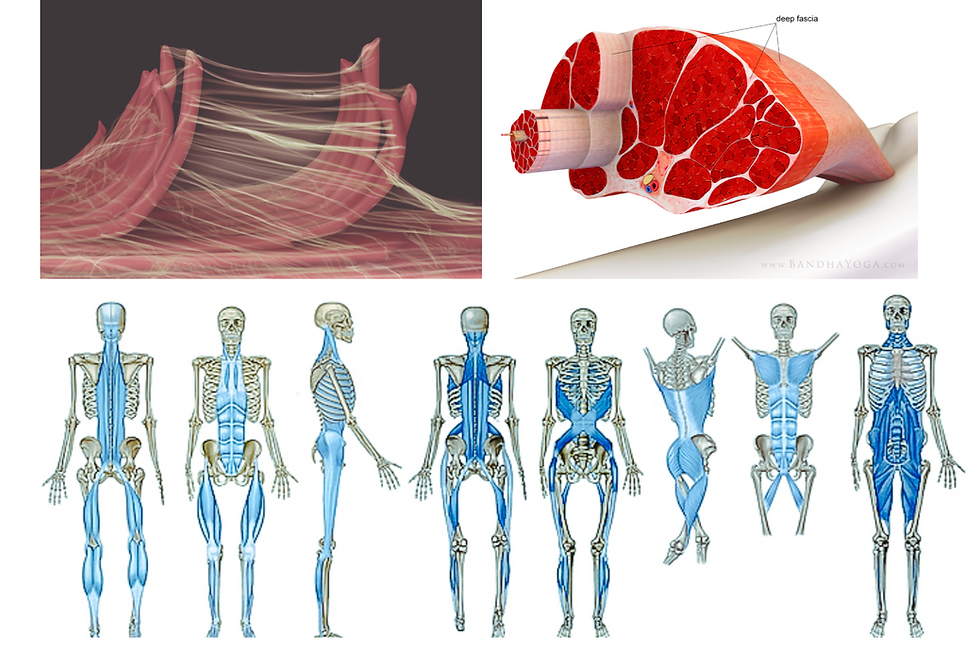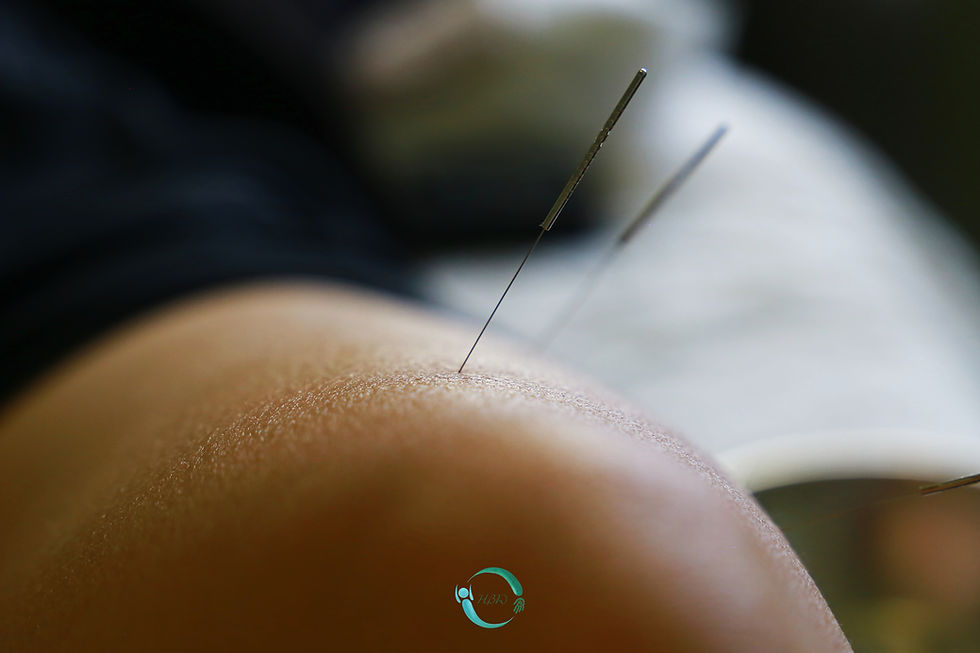What's holding us together? Learn about myofascia!
- Harmonize Body Works
- Aug 19, 2024
- 3 min read
You might’ve heard the word myofascia or fascia but doesn’t know what or where exactly is, and why we have it in us as a part of connective tissue.
If I ask you, how is your body built, you would say it’s built with flesh, bone and organs. Which is true but how is it all contained and not sifting around inside? Fascia, the ‘spider web’ like multilayer connective tissue that is holding our skin, muscles, organs and whole body together like glue.
From a remedial massage therapist point of view, I will introduce fascia, what are the functions in our body and how an unhealthy fascia can be the cause of your pain.

What is myofascia?
Myofascia is EVERYWHERE in our body. Literally, it is like a whole-body suit that covers multilayers of our body, superficial to deep, top to bottom. Because of fascia our body can hold, stabilize and connect itself and without it our body will be just a pile of mass. Fascia’s main role is to surrounds and holds every organ, blood vessel, bone, nerve fiber and muscle in place. It’s a bit like your body’s built-in bubble wrap – wrapping and protecting our precious body. Regardless of the type, the objective of the myofascia is always to protect, stabilize and maintain homeostasis, and protect from illness and injury – keeping the body in balance, alive and functioning. It’s the peacekeeper.
Fascias are dense, regular connective tissues, which contain closely packed bundles of collagen fibres. These fibres are oriented in a wavy pattern, which runs parallel to the direction of pull. Because of this arrangement, fasciae are flexible structures that can withstand significant unidirectional tensile forces. The more we move and exercise, we keep our fascia fluid and mobile because of better blood circulation and oxygen transportation which means if you’re stationary and doesn’t exercise, you will lose the elasticity and mobility of the fascia and that’s when you start feeling the aches and pain.
Could my muscle pain might be a fascia pain?

The fascia tissue does more than provide internal structure; fascia has nerves that make it almost as sensitive as skin. When stressed, it tightens up.
Determining whether your pain is due to muscles, joints or fascia can be difficult. In general, muscle injuries and joint problems feel worse the more you move. Fascia adhesions tend to feel better with movement and also respond well to heat therapy, which helps bring back the tissue’s elasticity.

For some people, adhesions can worsen over time, causing the fascia to compress and contort the muscles it surrounds. This can result in hard, tender knots in the muscles, called trigger points. Myofascial pain syndrome is a condition in which those trigger points cause pain to occur:
During movement
When pressure is applied
In seemingly unrelated parts of the body (referred pain)
Treatment focuses on relieving pain and getting tight fascia and muscle fibres to relax.
RM therapy and myofascia health
Therapist can feel healthy fascia as fluid like, flexible and smooth but when it isn’t it can be felt as tight, tension and also thicken and sticky due to adhesion. When you’re in the later stage your range of mobility is highly likely be reduced and you’d also be in pain.
As a Remedial massage therapist, treating trigger point and thickened myofascial is a very common practice and I use trigger point therapy, positional release, myofascial release, and also dry needling therapy and cupping therapy for enhancing the result.


How to keep fascia healthy?
Having a healthy fascia keeps you move easily and moving more keeps your fascia healthy. It’s the full circle that never ends!
Keeping your fascia healthy has many benefits, from increase range of motion, to less pain. Things you can do to prevent fascia problems include:
Move more: In addition to a consistent but varied exercise routine, it’s important to be active throughout the day. Have a desk job? Take at least a two-minute break every hour to stand up and move around, which helps fascia stay supple. Consider walking meetings or stand up and walk while participating in conference calls.
Increase blood and oxygen circulation: From doing light exercise at gym, outdoor activity, or getting a massage also helps too!
Remedial Massage: Massage helps with increase of circulation but also has techniques to release myofascia which ease the tension, break the adhesion to improve myofascia health.
Stretch regularly: Stretching is essential to good health. It reduces the risk of inflammation and structural problems in the body.
Focus on posture: Slumping over a desk or a phone or walking in an awkward way to compensate for an injury can cause fascia to tighten. Try to maintain good posture while sitting or standing.



Written by Seonkyo Kim; Dip. RM therapy
Reference:





Comments